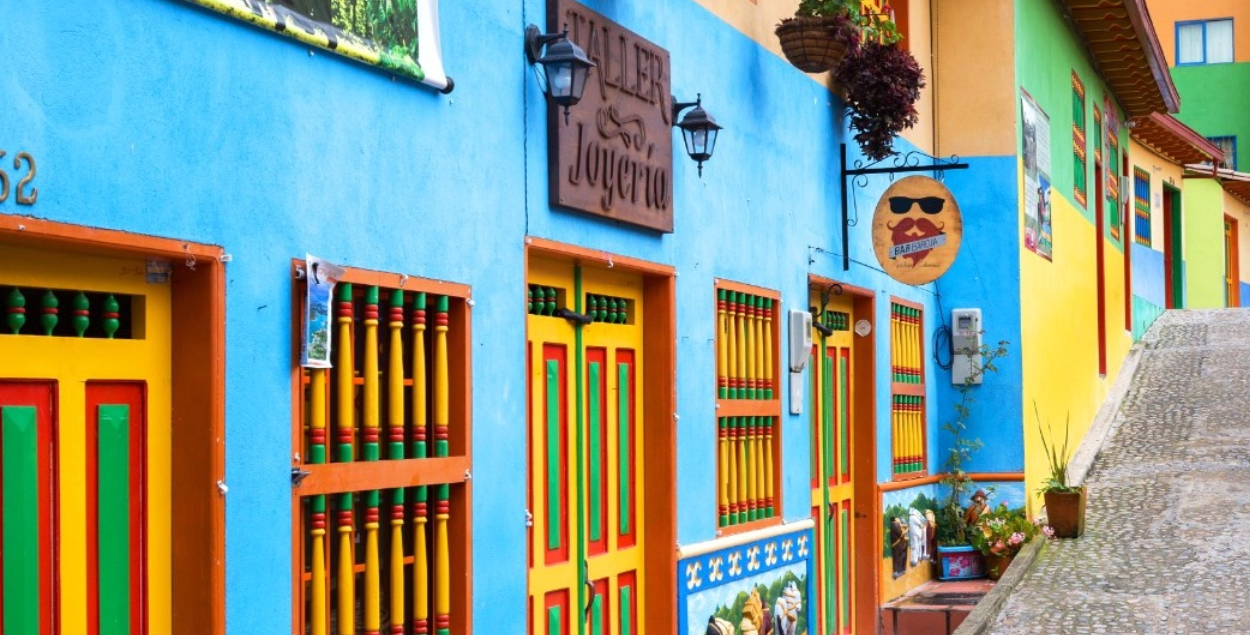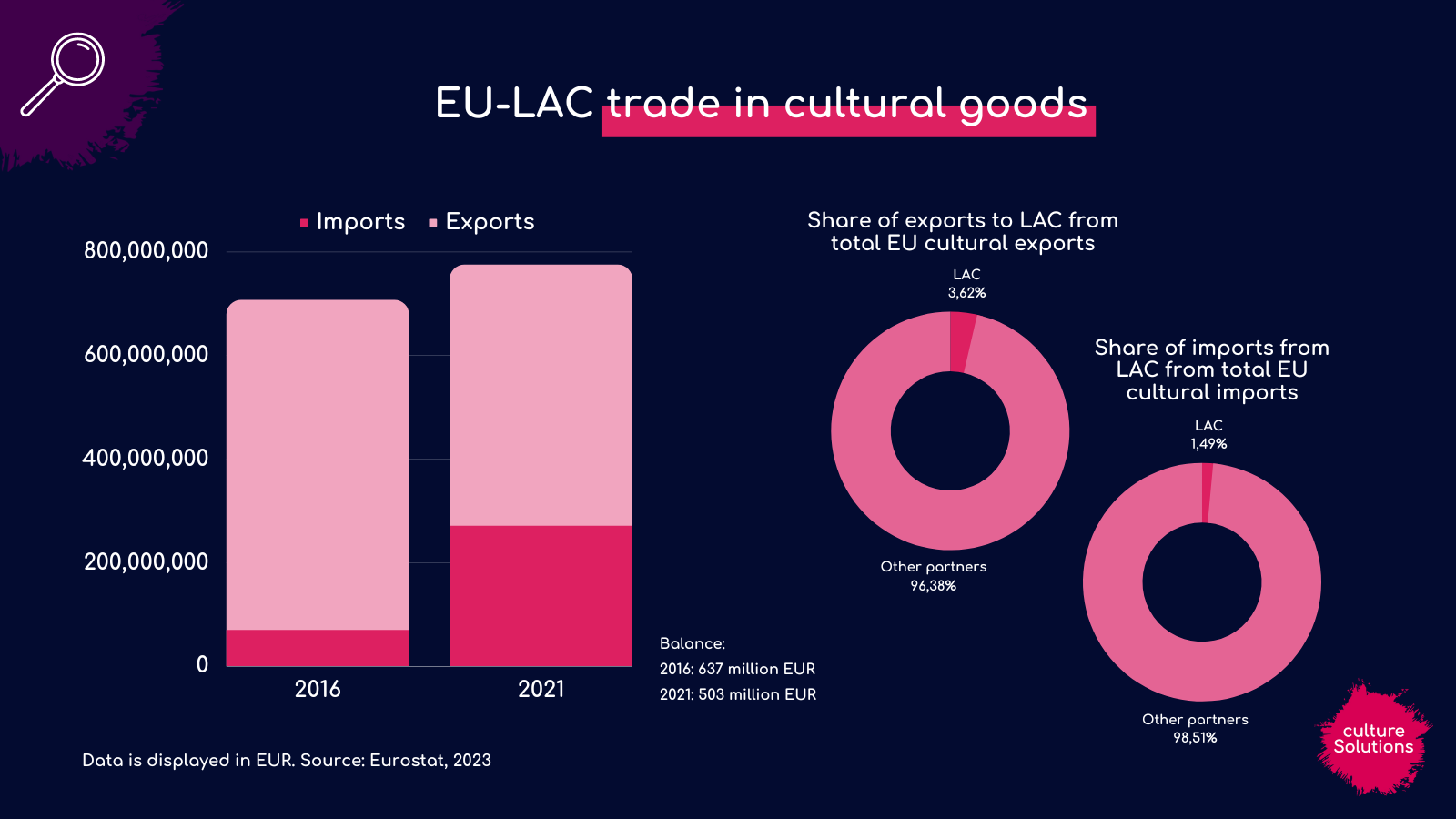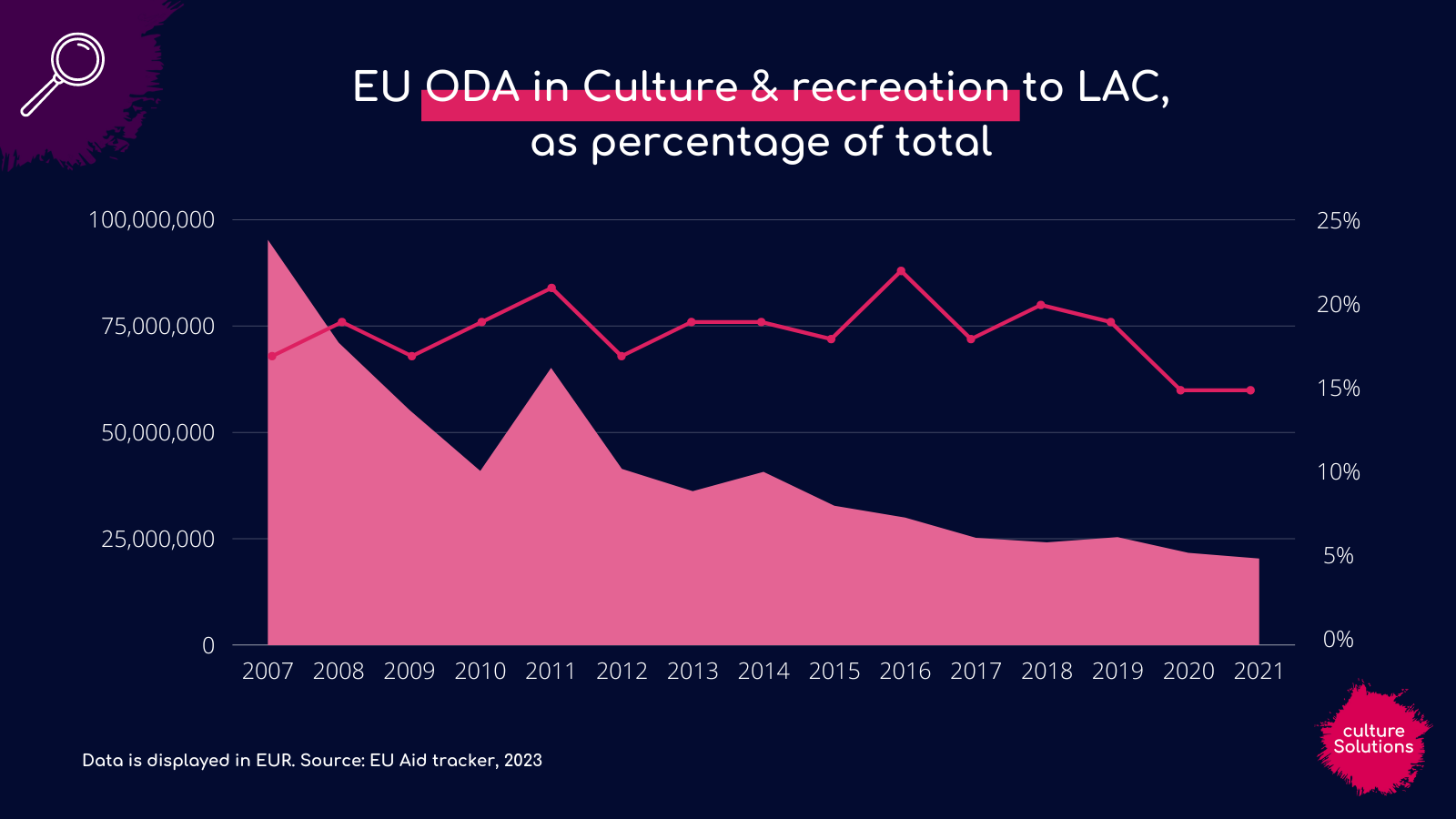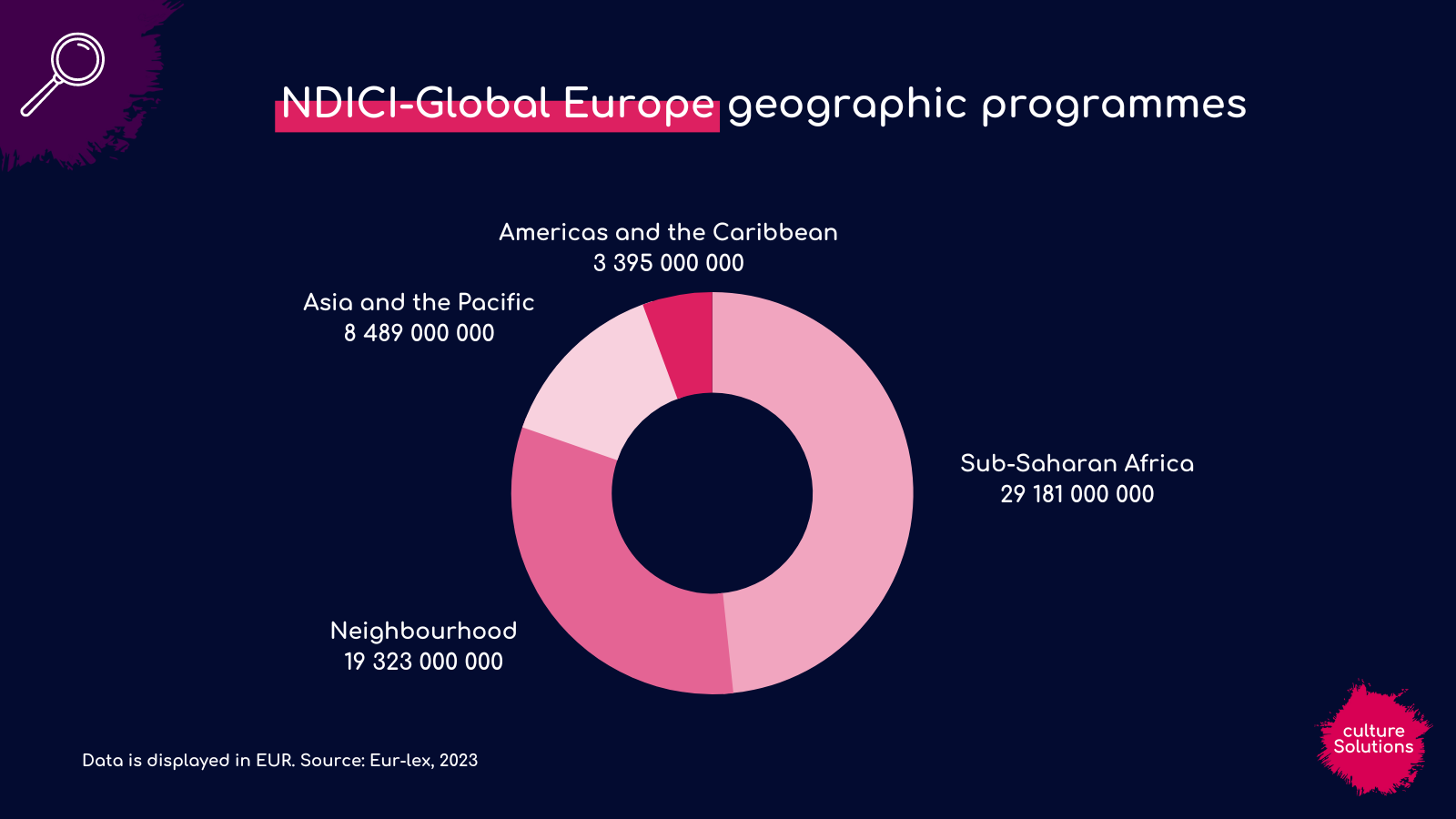EU-LAC cultural diplomacy: from natural partners to partners of choice, via Madrid
By Ina Kokinova
In the immediate aftermath of the EU-CELAC Summit celebrated on 17 and 18 July 2023, this blog post focuses on the political context and the cultural cooperation at the official level. In particular, it examines the New Agenda for EU-LAC relations launched by the Commission in June, and the role of Spain, which currently holds the rotating presidency of the Council of the EU.
State of play: a long-awaited, fragile relaunch
The EU and Latin and Caribbean (LAC) countries may often be perceived, in a white Euro-centric way, as culturally close to Europe: from languages (Spanish, Portuguese, Dutch, French) and history (colonisation), through descendent (Italian) or migrant population (in both directions), to a set of common values. Although these are invoked as the basis of the “natural” partnership between the two regions, their relations, including cultural, have not been a political priority for years.
In an attempt to relaunch the relationship, and rebrand it as a “partnership of choice”, on 17 and 18 July 2023 the third EU-CELAC Summit took place, convening the leaders of the 27 EU Member States and the 33 LAC states. The meeting comes shortly after the announcement of the Joint Communication New Agenda for Relations between the EU and LAC, and the subsequent visit of President von der Leyen to Brazil, Argentina, Chile and Mexico in mid June, but also coincides with the Spanish presidency of the Council of the EU.
However, the second EU-CELAC Summit was held in 2015 (the first one was in 2013, following 6 EU-LAC Summits between 1999 and 2010), that is, for 8 years there was no high-level engagement. The current warming-up seems driven by geopolitical interests, in particular de-risking from China and securing support against the Russian aggression on Ukraine, rather than by vibrant cultural links. This was reflected in the meeting agenda, which did not feature any point related to people-to-people exchanges. Nevertheless, the final Summit declaration includes a brief mention of “foster[ing] extensive people-to-people contacts”, while again invoking cultural ties between the two regions (although the text failed to get the support of all states due to its indirect reference to Russia).
Culture in EU policy and programming towards LAC
At the very end of the extensive New Agenda proposed by the Commission and the HR/VP, one finds the section dedicated to “Building a vibrant EU-LAC people-to-people partnership”. It commits to promoting youth opportunities, migration, parliamentary diplomacy, and engagement with civil society and think tanks. While commendable, the promise to “work together to maximise the potential of their diverse cultural expressions, heritage, vibrant creative industries for sustainable development and intercultural dialogue” is not matched by an easily operationalisable action. The rather generic “Deepen bi-regional cultural relations and encourage intercultural networks and joint initiatives” is complemented by the example of EU’s participation as guest of honour in the 2023 International Book Fair in Mexico – such a showcasing attitude falls short of fostering bidirectional cultural relations.
In fact, the 2019 Joint Communication European Union, Latin America and the Caribbean: joining forces for a common future dedicated more attention to cultural cooperation, proposing to structure it around three pillars. This finding confirms the general trend of reduced prioritisation of international cultural relations following the change of Commission in late 2019. In a similar vein, the regional multi-annual programme (MIP) for Americas and the Caribbean 2021-2027, mentions cultural ties three times, while the same amount of references are given to cultural activities or actors in the 76-pages documents, without elaborating further detail (similar to the previous MIP 2014-2021).
The New Agenda was not accompanied by a specific financial envelope to support it, although investments under the umbrella of Global Gateway were advertised. In total, the NDICI-Global Europe instrument allocates 3.4 billion EUR to the geographical region of Americas and the Caribbean. This is up from 925 million for Latin America under the previous MFF, and yet it is the lowest among the four world regions and only represents 5,6% of the budget of the geographic pillar. Even though LAC states have access to Erasmus+, they do not take part in the Creative Europe programme. The inter-governmental EU-LAC Foundation periodically organises cultural events.
Since 2007, the EU and its Member States have supplied 627 million EUR of development aid in projects related to culture and recreation, which represents 18% of the total. However, the trade in cultural goods between the two regions merely reached 3,6% in terms of exports and 1,5% of imports. In this regard, the 2008 CARIFORUM-EU Economic Partnership Agreement became the first EU trade agreement to feature comprehensive provisions on culture. In that regard, past initiatives with cultural components included Mercosur Audiovisual programme or Investing in People. On the other hand, 6 out of the 25 European Spaces of Culture are developed by EUNIC clusters in LAC countries.
On a positive note, the small Caribbean states benefit from cultural relations initiatives, such as the ACP-UE Culture Programme, implemented by the Organisation of the African, Caribbean and Pacific Group of States (OACPS) with a budget of 40 million EUR for 2019-2026, or the Transcultura Programme, of whose 15 million EUR budget for 2020-2023 is in charge the UNESCO field office in Cuba. The Council recently approved the signature of the post-Cotonou partnership agreement with the 79 ACP countries, which dedicates a chapter to culture (Articles 37-39). It must be noted that the grouping of Caribbean together with Latin American countries as LAC may be culturally questionable considering their particularities.
All this is symptomatic of the fact that LAC is competing, rather unsuccessfully, for the EU’s attention with Africa (traditionally the largest recipient, with 48% of NDICI budget), Asia (that is currently increasingly under the spotlight with China’s influence rising), and of course the neighbourhood (with its 16 Eastern and Southern neighbours, absorbing one third of NDICI). Such a limited pool of financial resources for LAC results in the Delegations’, physically present only in 26 out of 33 states and often understaffed, margin of discretion over whether and how to engage in cultural activities.
Proving that EU and LAC countries continue sharing cultural ties in the post-colonial era requires both spearheading political leadership (demonstrated at the recent summit) and clear statements securing increased funding for cultural relations.
Spanish presidency: bridging EU and LAC
The biggest advocate for EU-LAC relations has traditionally been Spain. It is no coincidence the Summit comes after the country took over the rotating presidency of the Council of the EU on 1 July. The previous Spanish term, between January and June 2010, hosted the last EU-LAC Summit before the transition to the EU-CELAC format. Now Spain has reaffirmed its commitment by placing special attention to Latin America under its first presidency priority called “ensuring open strategic autonomy”. In particular, Spain will oversee the advancement of the agreements with Chile, Mexico and MERCOSUR. Between 24 and 27 July Madrid is also hosting the EuroLat parliamentary assembly. Nevertheless, it is yet to be seen if this time the Spanish Presidency accomplishes pinning LAC to the EU’s geopolitical map, as a “partner of choice” beyond its tenure.
Although culture is nowhere to be found in the description of the four Spanish priorities (the closest one being “development of our common identity and values”), the presidency programme features several cultural events in addition to digital cultural creation. On 9 and 10 November 2023 the Spanish city of Santiago de Compostela will host a High Officials of Cultural Diplomacy meeting – worth keeping an eye on. The success of the presidency however was thrown into question when Pedro Sánchez called snap elections on 23 July 2023, and with the change of government all but assured, international cultural relations are poised to fall off the agenda.
Spain’s current position as an intermediary capable of reducing the distance between Europe and what it once dubbed “New World” is described as deriving from a mix of geographic location, history and subsequent cultural convergence. However, this assumption about the past is far from unproblematic, especially when relations with a specific country are already strained in economic and political terms, as evidenced by Mexico’s discontent occasioned by Spain’s refusal to apologise 500 years after the conquest.
The wide-spread belief among Spaniards that the conquest of Latin America was mutually beneficial because it produced cultural heritage and mixed peoples, as opposed to the violent French or Belgian extractivism in Africa, seems in disconnect with wider decolonisation attempts currently being made all over Europe.
In such a context of underlying tensions, art and culture more broadly offer a safe space for the much-needed open discussion on an equal footing about colonial memories, symbols and meanings. Hence, existing dialogue mechanisms, such as the Ibero-American system (with its General Secretary and periodic meetings, Organisation for Education, Science and Culture and Youth Organisation) or different sectoral organisations, can be easily employed for the promotion of decolonial cultural relations, the support of bottom-up civil society and artists initiatives, as well as the pursuit of synergies with European programmes and policies.
Regardless of how culturally “Eurocompatible” the region might be, relationships between states and their peoples are similar to those between individuals – if neglected over a long period of time, they risk gradually fading away. Against the backdrop of insufficient official EU-LAC cooperation, civil society initiatives play an even more important role in shaping local perceptions of the EU.
The value of cultural relations for EU-LAC and global challenges
The contribution of culture towards international relations goes beyond its aesthetic enjoyment, as it can drive economic growth, boost creativity and improve individuals’ livelihoods, while also providing societal and well-being benefits and opening venues for innovative cooperation on issues of global interest (and ultimately trust-building). Two such areas of collaboration coincide with the current priorities of the European Commission, world-wide but also in what regards Latin America and Caribbean – green and digital transitions.
An example of this was the creative dialogue on climate change during the project AMBIT by Cristóbal Gabarrón. Organised on 15 July 2023 in collaboration with the Spanish presidency of the Council in the framework of the EU-CELAC Summit, Brussels’ Parc du Cinquantenaire saw the convergence of live action painting, music, songs, poems and performances. Importantly, the initiative included artists, creators, activists and representatives from both Europe and Latin America. Embracing the unknown (in terms of both the Belgian weather and the outcome of the improvisation), the different artistic worlds as well as the audience that was invited to participate and engage, converged and inspired the painter to create “the new dream”.
The happening served as a wake-up call to act swiftly in progressing towards a sustainable and resilient future, for instance through the integration of indigenous knowledge on land and resource management with science. The young Colombian climate activist Francisco Vera summed up the event as an illustration of eco-hope and culture of life, where environmental education, support to culture and artists and inter-generational dialogue form part of the common fight against climate change. Although art may not be the solution to the climate or other emergencies, its transformational and trust-building power, especially when stemming from the grass roots (as shown in the second blog post of the series), is an indispensable part of the change.
The views expressed in this article are personal and are not the official position of culture Solutions as an organisation.




